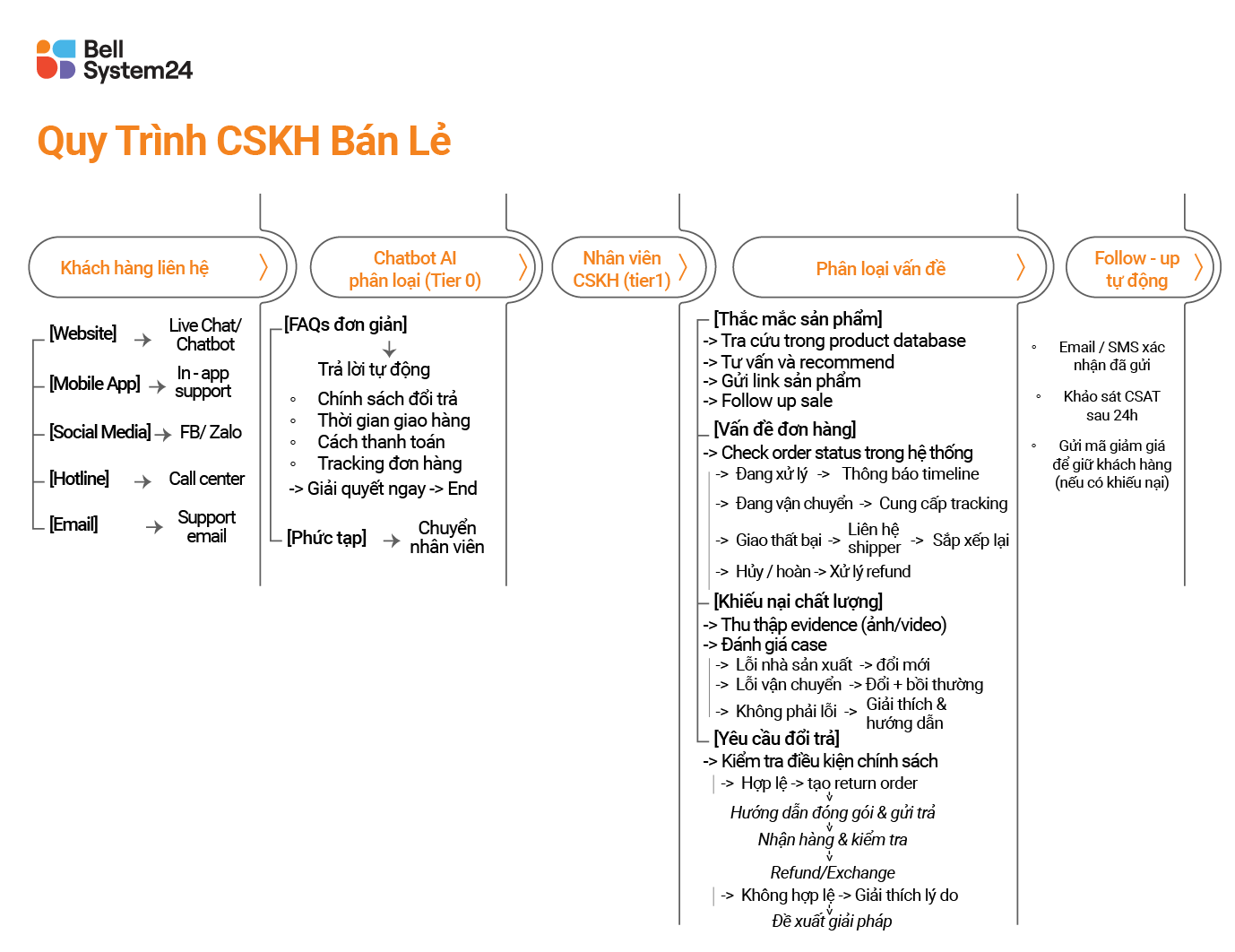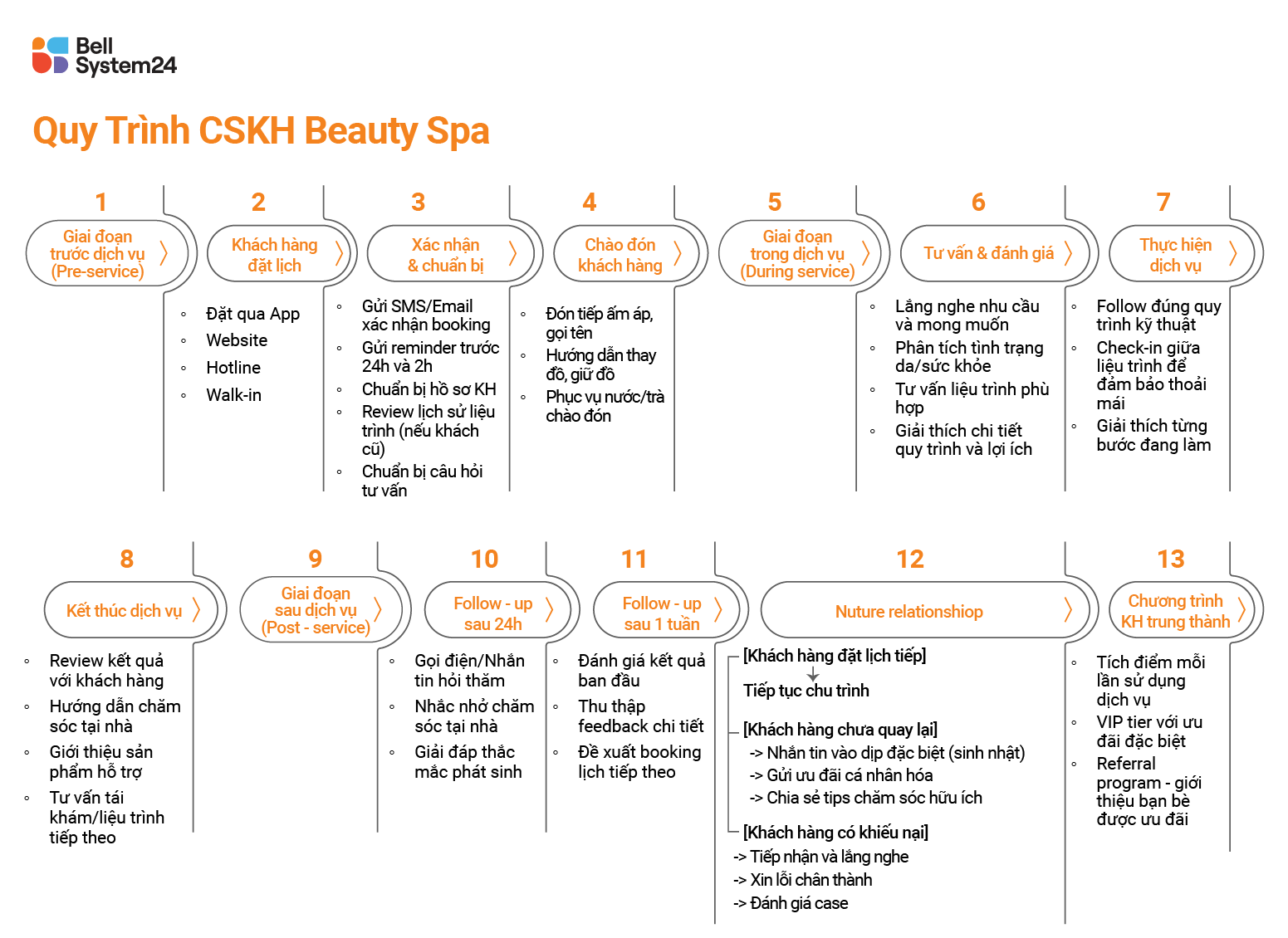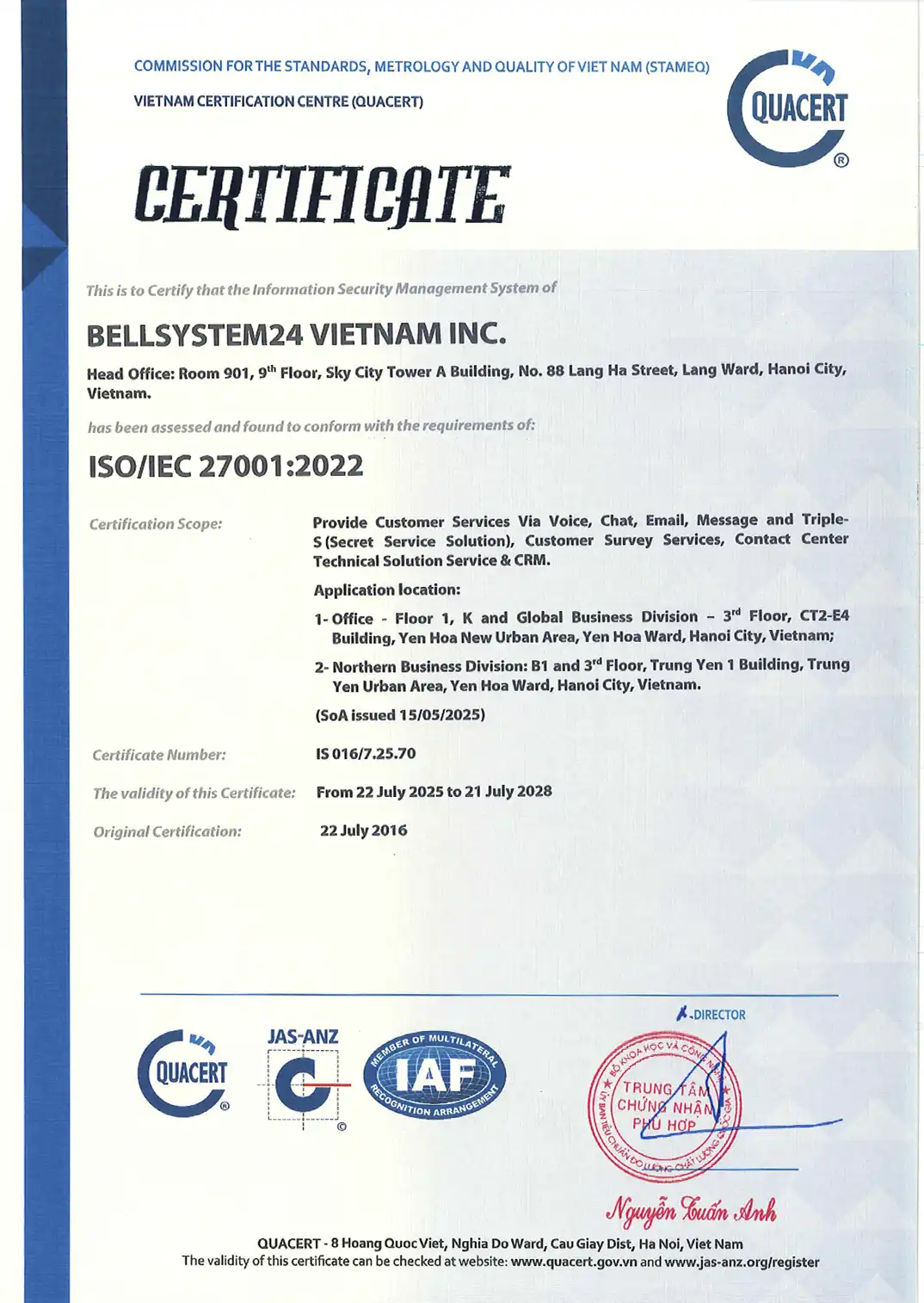According to research by Zendesk, 61% customers are willing to switch to a competitor after just one bad service experience. Furthermore, 95% dissatisfied customers will share their negative experiences with others.
One customer service process Standardization not only resolves crises, but also serves as a distinguishing factor that helps businesses retain loyal customers in an era of fierce competition.
A professional customer service process delivers three core benefits
- ConsistencyAll customers receive service experience equivalent, regardless of which employee they interact with, which channel they use, or when they interact.
- ScalabilityAs your business grows, you can quickly hire new employees without worrying about a decline in service quality.
- Measurable: Easily measure KPIs, identify bottlenecks, and continuously improve.
This article will provide a detailed analysis of the components of a process, the Customer Service Process Template Practical and step-by-step guide to building your own customer service process from A to Z.
Core Elements of a Professional Customer Service Process
1. Customer Contact Point
These are all the channels through which customers can interact with the business: hotline, email, live chat, social media, mobile app, and physical store. A professional process must clearly define each touchpoint and how to handle each one.
2. Classification and Prioritization
Not all requests have the same priority. The process needs to have a classification system based on:
- Urgency: Emergency, High, Medium, Low
- Type of problemComplaints, product inquiries, technical support requests, and suggestions.
- Customer valueVIP, loyal customers, new customers, potential customers
3. Scenario Handling
For each situation, a standard scenario is required, including:
- How to greet and acknowledge the issue
- Questions to gather information
- Solution or course of action
- How to conclude and follow up
Customer Care Script not for employees to read mechanically, but rather a framework to ensure that no important steps are overlooked.
4. Authority and Responsibility Assignment
When planning work allocation and building a personnel structure, businesses need to clearly determine:
- Responsibility: Who handles which type of request
- Authority: Level 1 employees can decide for themselves to what extent and when to escalate requests to higher levels.
- Service levelMaximum response time for each customer support case.
5. Tools and Support Systems
Modern work processes must be linked to specific tools such as:
- CRM to store customer information
- Helpdesk for managing tickets
- Knowledge base for quick lookup
6. Measurement and KPIs
Professional processes always come with measurable metrics. See details: 10 Customer Experience Metrics
7. Continuous Improvement Mechanism
The process is not a fixed design; it requires options so that the business has the opportunity to review, analyze, and make improvements. For example:
- Regular review meetings (weekly/monthly)
- Collect feedback from customers and employees
- Analyze data to identify bottlenecks.
- Conduct pilot tests of improvements before widespread implementation
Professional Customer Service Process Templates
Here are 5 Customer Service Process Template Designed for various industries. Each template includes a logic flowchart and practical notes.
Basic Customer Service Process

B2B Customer Service Process

Retail Customer Service Process

Beauty Spa Customer Service Process

Customer Service Process for Education

6 Steps to Build a Customer Service Process

See detailed content: 6 steps to build a customer service process →







